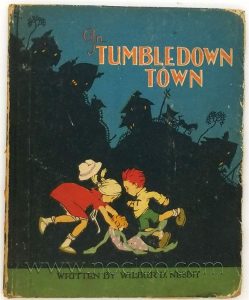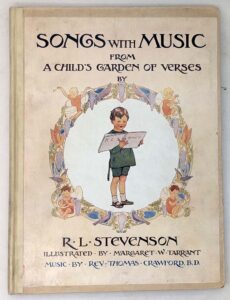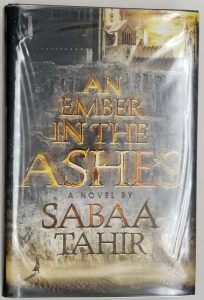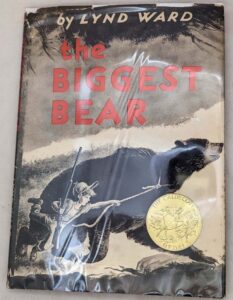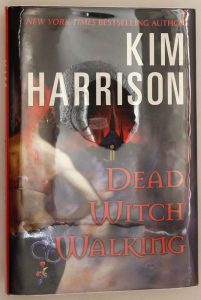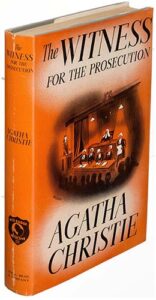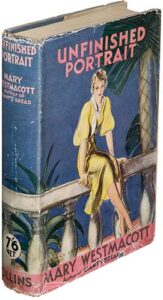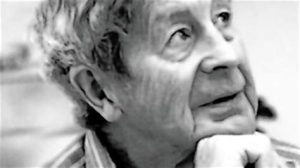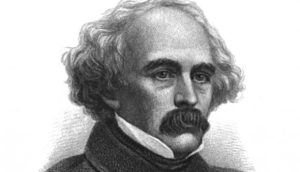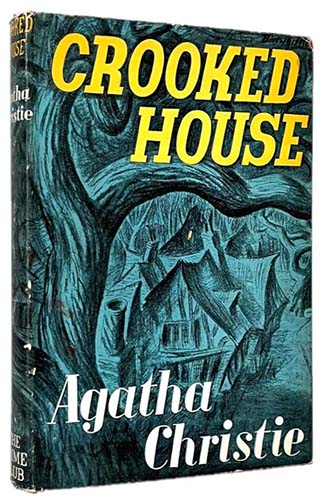
Crooked House is a work of detective fiction by Agatha Christie first published in the US by Dodd, Mead and Company in March 1949 and in the UK by the Collins Crime Club on 23 May of the same year. The UK edition sold for eight shillings and sixpence (8/6) and the US edition at $2.50.
The action takes place in and near London in the autumn of 1947. Christie said the titles of this novel and Ordeal by Innocence were her favourites amongst her own works.
The title refers to a nursery rhyme (“There Was a Crooked Man”), a common theme of the author. Narrator Charles’s fiancée Sophia says it refers not to dishonesty, but rather “we hadn’t been able to grow up independent… twisted and twining”, meaning unhealthily interdependent on the intensely strong personality of the family patriarch, Aristide Leonides.
Plot Summary
[SPOILER ALERT]
Towards the end of the Second World War, Charles Hayward is in Cairo and falls in love with Sophia Leonides, a smart, successful Englishwoman who works for the Foreign Office. They put off getting engaged until the end of the war when they will be reunited in England.
Hayward returns home and reads a death notice in The Times: Sophia’s grandfather, the wealthy entrepreneur Aristide Leonides, has died, aged 85. Due to the war, the whole family has been living with him in a sumptuous but ill-proportioned house called “Three Gables”, the crooked house of the title. The autopsy reveals that Leonides was poisoned with his own eserine-based eye medicine via an insulin injection. Sophia tells Charles that she can’t marry him until the matter is cleared up.
The obvious suspects are Brenda Leonides, Aristide’s much younger second wife, and Laurence Brown, a conscientious objector who has been living in the house as private tutor to Sophia’s younger brother and sister, Eustace and Josephine. They are rumoured to have been carrying on an illicit love affair under old Leonides’s nose. The family members hope these two prove to be the murderers because they despise Brenda as a gold digger and also hope to escape the scandal that a different outcome would bring. Charles agrees to help his father, an assistant commissioner of Scotland Yard, to investigate the crime. He becomes a house guest at Three Gables, hoping that someone might reveal a clue at an unguarded moment.
All the family members had motive and opportunity, none has an alibi; and each of them knew that Aristide’s eye medicine was poisonous as he had told all the family after being asked by Josephine. According to the will, they all stand to gain a healthy bequest from the old man’s estate. The servants do not get bequests but would lose their (increasing) annual wages or bonuses, so are not suspects. Aside from this, the family members have little in common. Edith de Haviland, Aristide’s unmarried sister-in-law, is a brusque woman in her 70s who came to stay with him after his first wife’s death to supervise his children’s upbringing. Roger, the eldest son and Aristide’s favourite, is a failure as a businessman. He has steered the catering business bestowed to him by his father to the brink of bankruptcy and he longs to live a simple life somewhere far away. Roger’s wife Clemency, a scientist with austere and unsentimental tastes, has never been able to enjoy the wealth offered by her husband’s family. Roger’s younger brother, Philip, has suffered under his father’s preference for Roger, and retreated into a distant world of books and bygone historical epochs, spending all his waking hours in the library. Philip’s wife Magda is an only moderately successful actress to whom everything, even a family murder, is a stage show in which she wants to play a leading part. Sixteen-year-old Eustace has polio. He is handsome and intelligent, yet embittered by his disability. His twelve-year-old sister Josephine, on the other hand, is ugly, precociously intelligent, and obsessed with detective stories. She spies continually on the rest of the household, letting everyone know that she is writing down her observations in a secret notebook.
Leonides had secretly personally rewritten (to the surprise of his lawyer Mr Gaitskill) his will to leave everything to Philip’s daughter Sophia. He believed that she alone had the strength of character to assume his place as the head of the family. Josephine, who had been bragging that she knows the killer’s identity, is found lying unconscious in the yard from a blow to the head from a marble doorstop. Charles discovers a cache of incriminating love letters from Brenda to Laurence, and the two are arrested. While they are in custody, the children’s nanny dies after drinking a digitalis-laced cup of cocoa that had apparently been intended for Josephine. The family realises that the killer is still among them.
Charles, afraid for Josephine’s life, tries in vain to induce her to disclose the murderer’s name. Edith de Haviland invites Josephine to come out with her in the car for an ice cream soda. The car drives over a cliff and both are killed. Back at Three Gables, Charles finds two letters from Miss de Haviland. One is a suicide note for Chief Inspector Taverner taking responsibility, although not explicitly confessing, to the murders of Aristide and Nanny. The second letter, intended for Sophia and Charles only, reveals the truth of the matter: Josephine was the murderer. As proof, de Haviland has enclosed the child’s secret notebook, the first line of which reads “Today I killed grandfather.”
Josephine killed her grandfather because he wouldn’t pay for her ballet lessons; she then revelled in all the attention she received afterwards and planned her own assault with the marble doorstop as a way of diverting attention. She poisoned Nanny for encouraging Magda to send her to Switzerland, and also because Nanny called her a “silly little girl”. She also included threats against Magda if her mother seriously considered sending her away. Miss de Haviland had discovered Josephine’s notebook hidden in a dog kennel, and committed the murder-suicide car crash as she did not want Josephine to suffer in a prison or asylum if and when the police learned she was the murderer.
Publication history
- 1949, Dodd Mead and Company (New York), March 1949, Hardback, 211 pp
- 1949, Collins Crime Club (London), 23 May 1949, Hardback, 192 pp
- 1951, Pocket Books (New York), Paperback, (Pocket #753), 200 pp
- 1953, Penguin Books, Paperback, (Penguin #925), 191 pp
- 1959, Fontana Books (Imprint of HarperCollins), Paperback, 191 pp
A condensed version of the novel was first published in the US in Cosmopolitan magazine in the issue for October 1948 (Volume 125, Number 4) with an illustration by Grushkin.
In the UK the novel was first serialised in the weekly magazine John Bull in seven abridged instalments from 23 April (Volume 85, Number 2234) to 4 June 1949 (Volume 85, Number 2240) with illustrations by Alfred Sindall.
Crooked House – First Edition Book Identification Guide
The books are listed in the order of publication. While the majority of Agatha Christie’s books were first published in the UK. There are many titles that were first published in the US. The title of the book may differs from the UK edition in some cases.
| Year | Title | Publisher | First edition/printing identification points |
|---|---|---|---|
| 1949 | Crooked House | Dodd, Mead & Co, NY, [1949] | First edition. Copyright 1949 stated on the copyright page. No statement of later printings. Black cloth lettered in red. Price: $2.50. There is a Book Club edition on grey, blue or green boards using the same sheets as the first edition. No price on front flap of the dust jacket. Price $2.50. |
| 1949 | Crooked House | William Collins & Sons, London, [1949] | First English edition. "1949" on single line stated on the copyright page. No statement of later printings. Red or orange cloth lettered in black. Price 8/6. |
Note about Book Club Editions (BCE) and reprints:
UK: You can see statements of later reprint dates or of book club on the copyright page.
US: The US reprint publishers usually use the same sheets as the first edition and are harder to identify by looking at the title page or the copyright page. One may identify a BCE by looking at the DJ, which doesn’t have a price on top of the front flap and a “Book Club Edition” imprint at the bottom. If the dust jacked is clipped at both the top/bottom of the front flap. You can safely assume it’s a BCE . If the book is missing the dust jacket. Later BCE editions can be identified by its plain boards, while first printings are issued in quarter cloth.
Please refer to the gallery for detailed images of true first edition bindings and dust jackets.
Crooked House – First Edition Dust Jacket Identification Guide
First edition bindings and various dust jacket printings identification.
